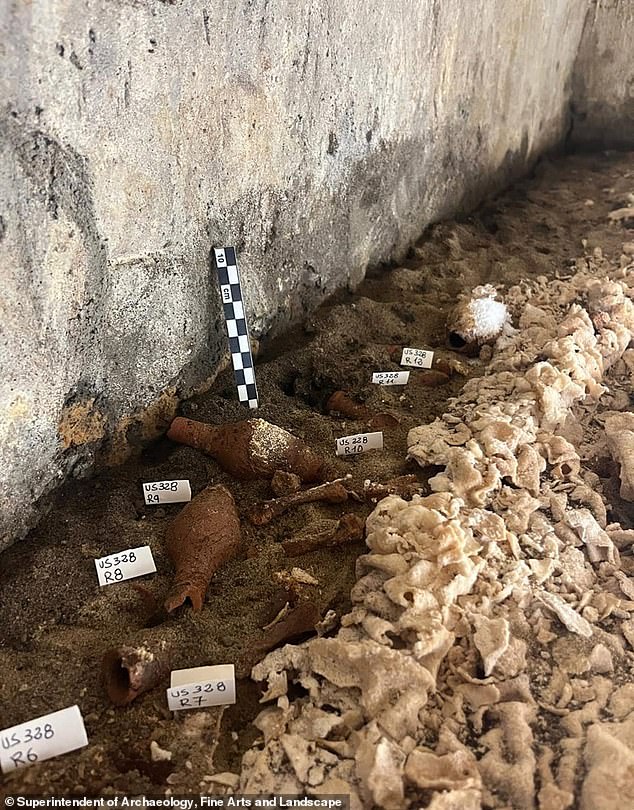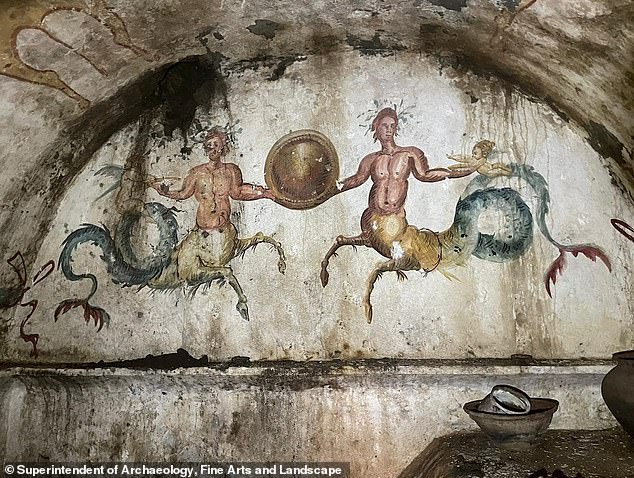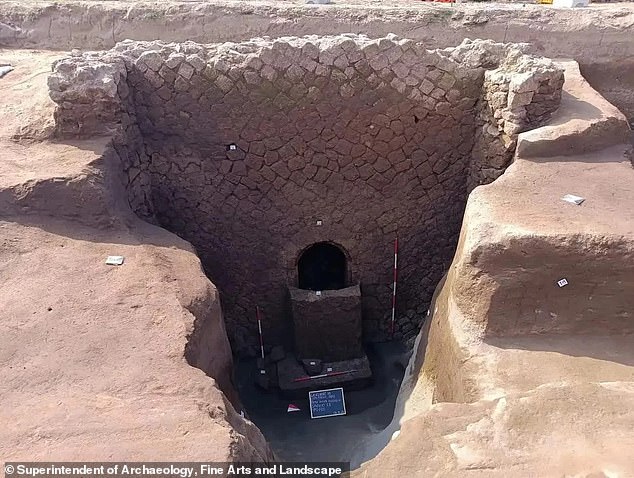Archaeologists have been stunned after finding an ancient mummy perfectly preserved for thousands of years in Italy.
The team made the “unprecedented” find after opening the 2,000-year-old sarcophagus in the historic “tomb of Cerberus” in Naples.
The remains had been preserved using plant-based creams that were applied to the bodies before they were sealed in the chamber, providing new and detailed evidence revealing how ancient Rome embalmed its own dead.
One of the bodies was found wrapped in a shroud, surrounded by grave goods, which the team unwrapped and found that the individual was perfectly preserved.
The special care given to the deceased and the chronology of the objects found suggest that he could have been the founder of the family for which the mausoleum was built.
The burial chamber was discovered in Giugliano, a suburb of Naples, and is believed to be around 2,000 years old. It was discovered after archaeologists spotted a wall that featured an ancient Roman building technique known as opus incertum.
Archaeologists have previously found a large number of burial sites in the same area, dating from the time of the Roman Republic (510 BC to 31 BC) to the Roman Imperial era (31 BC to 476 AD).
The ‘Tomb of Cerberus’, located in Giugliano, was discovered in 2023 after archaeologists discovered the boundary of the necropolis.
Further analysis revealed that the structure was the entrance to a burial chamber, which featured a stunning fresco depicting Cerberus, the three-headed dog from ancient Greek mythology believed to be the guardian of the underworld.
Guigliano, located in Campania, was colonized by the ancient Greeks between the 8th and 7th centuries BC.
The tomb was discovered by the Superintendency of Archaeology, Fine Arts and Landscape, who were not only shocked by the good state of preservation of the bodies but also by the method used.
Researchers plan to share images of the newly found mummies at a later date.
The remains had been smeared with cream made from chenopodium, a genus of perennial herb known colloquially as goosefoot, and absinthium (wormwood).
The combination has been found in remains from the past, including the body of a 17th-century bishop found beneath a cathedral in Sweden.

The ancient sarcophagus, approximately 2,000 years old, located in Naples in southern Italy, was first examined with a microcamera to assess whether breaking the seal could damage the precious artifacts and remains it contains (pictured above) by exposing them to air.

A sealed sarcophagus in the “tomb of Cerberus”, the three-headed dog from Greek mythology, has been opened, surprising experts as the mummies are in “excellent condition”. The long-sealed chamber, part of a necropolis adorned with ornate frescoes (above), was discovered outside Naples, Italy.
However, the mummy that was unwrapped was covered by a shroud that experts believe was mineralized due to the climatic conditions inside the chamber.
S“In recent months, in fact, laboratory analyses carried out on samples taken from the burials and burial beds have yielded a considerable amount of data on the treatment of the body of the deceased and the funeral ritual performed, significantly enriching the panorama of our knowledge,” said superintendent Mariano Nuzzo in a statement.
The burial chamber was discovered after archaeologists detected a wall built using an ancient Roman construction technique known as opus incertum.
The method used uncut stones, randomly placed and irregularly shaped, which appeared around the 2nd century BC.
It was later discovered that this was the front wall of the tomb, which had been sealed with a heavy slab of tuff, a light, porous rock created from volcanic ash and other sediments.
To access the burial chamber, archaeologists had to carefully remove tiles covering the opening in the ceiling, revealing what experts said was an “unprecedented” discovery.
They inserted a microcamera into the small opening, allowing them to see the bodies locked inside.
The project, funded by Italy’s Ministry of Culture, is now carrying out DNA analysis on the mummified human remains, in order to identify the multiple bodies discovered.

